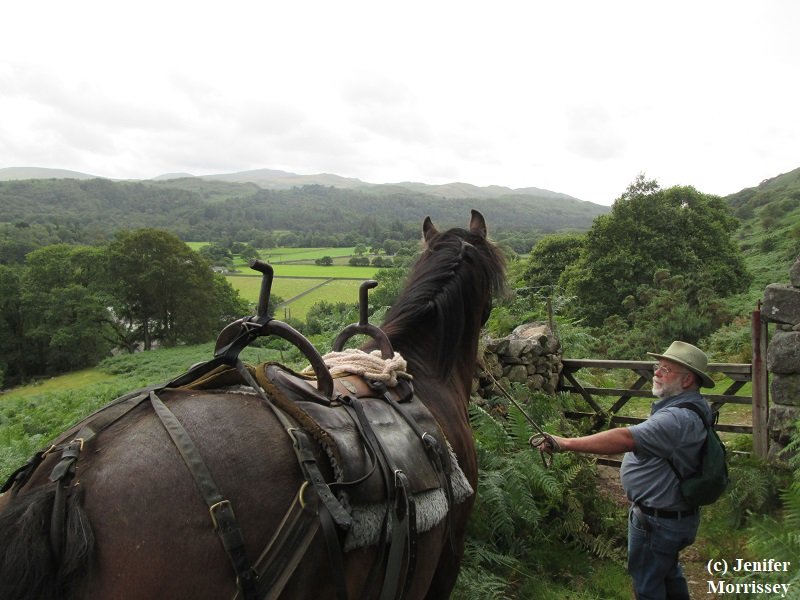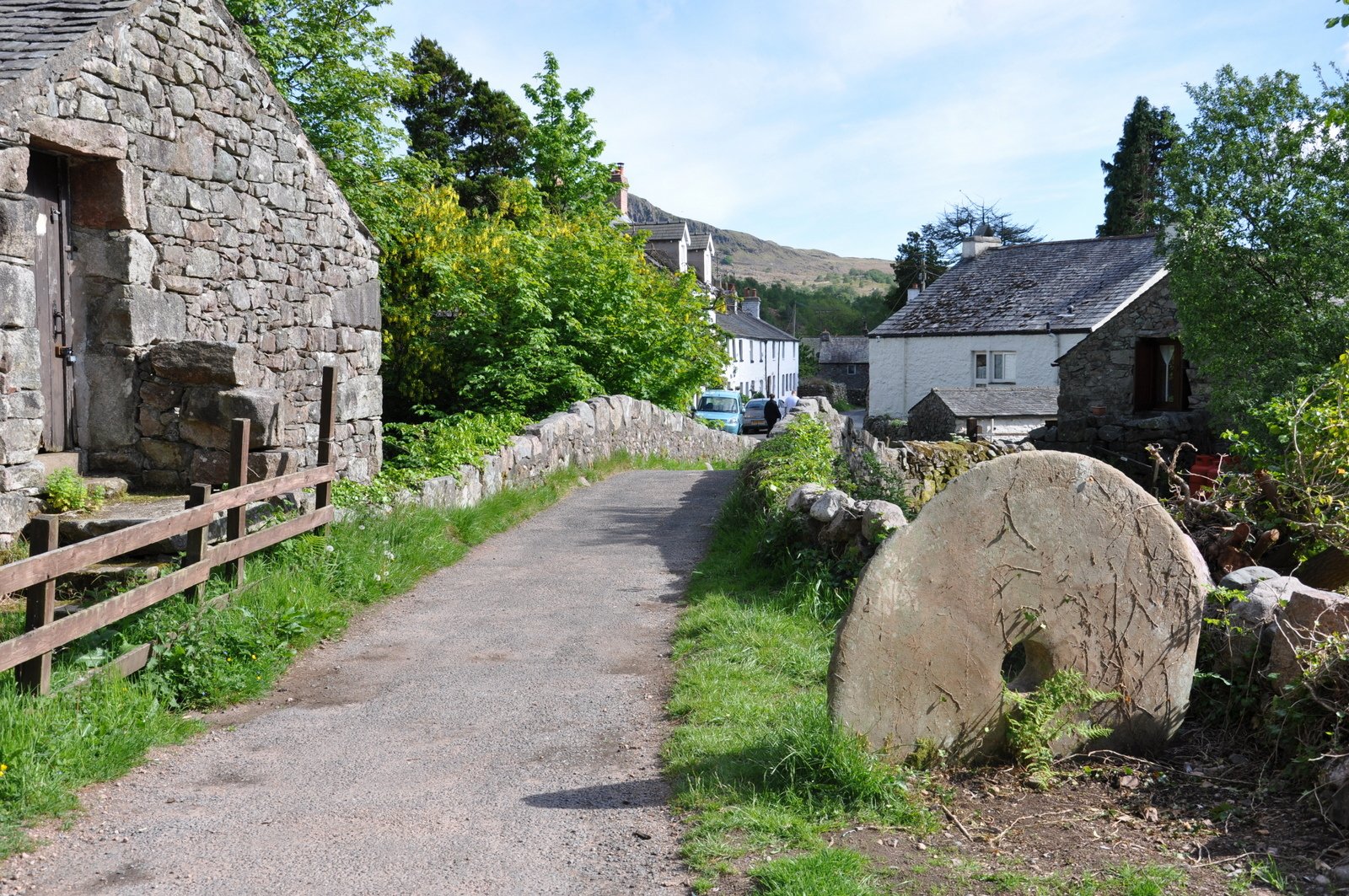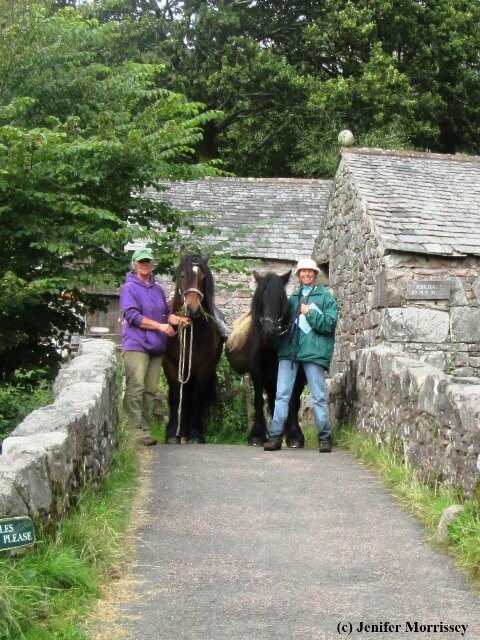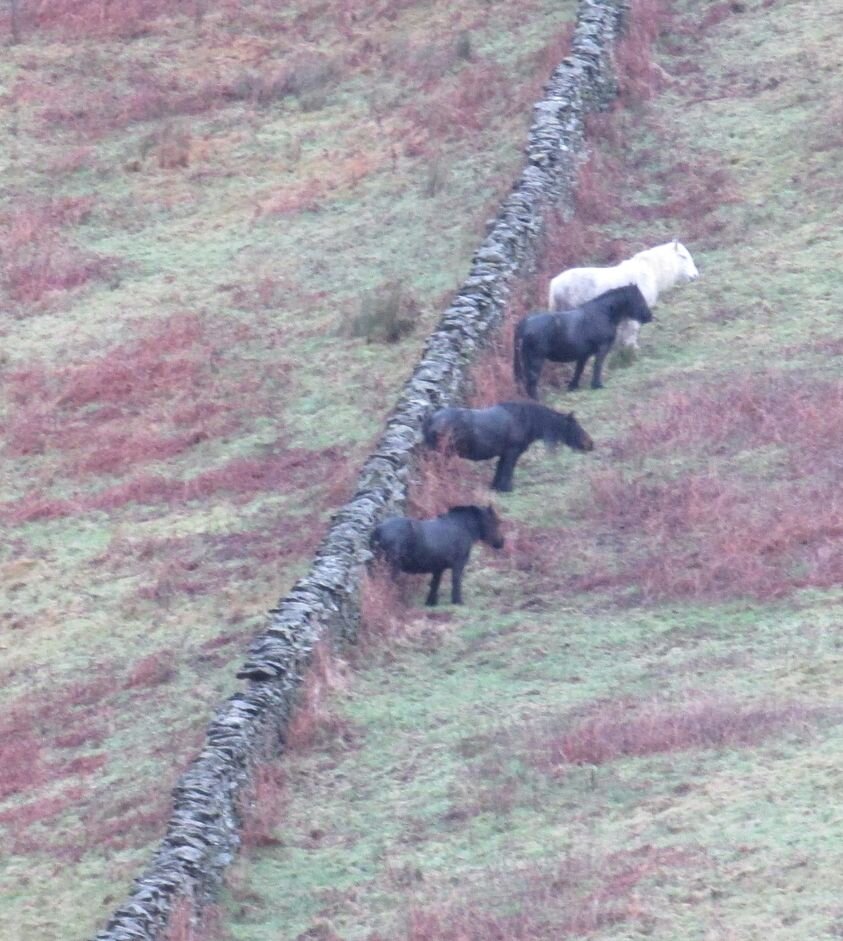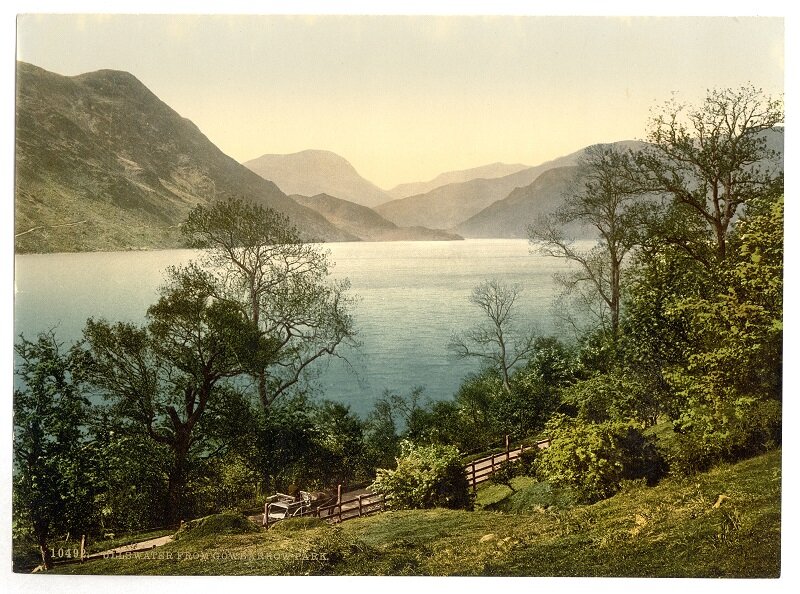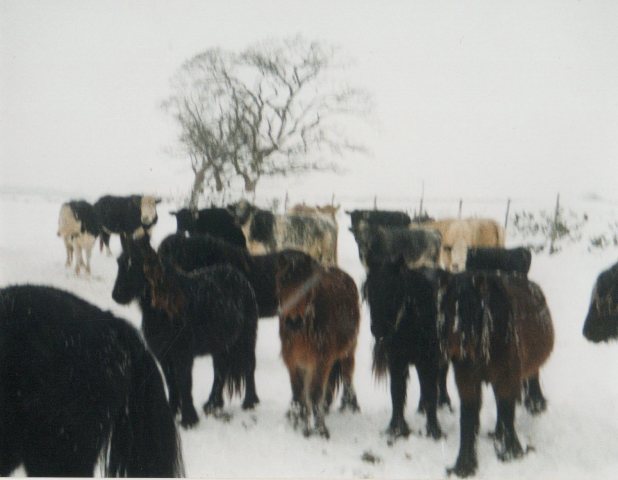Fell Ponies and Conservation Grazing - 2
/In Sue Millard’s book Hoofprints in Eden, Sue describes how Fell Ponies have historically fit into the grazing year of traditional hill farms. She points out that most fell farms are predominantly grass farms, without or with only a small amount of arable land. Fell rights, when they have them, allow the farmers to put their stock – sheep, cattle, ponies – out onto the common so that a hay crop for instance might be harvested from the close-in grounds. Or at least, by the stock being out on the fell, there’s lessened impact of the stock on the close-in ground during the growing season. (1)
Two members of the Globetrotter Fell Pony herd help control rushes at Gowbarrow Hall Farm as part of a regenerative grazing program. Courtesy Libby Robinson
More recently, Fell Ponies have been used for conservation grazing: managed grazing to achieve a defined conservation benefit. For instance, in the winter of 2021, three Greenholme Fell Pony yearlings were used for a few months at Clints Quarry near Egremont, west of the Lake District, to improve habitat for wildflowers. Sarah Dalrymple, Reserves Officer for Cumbria Wildlife Trust, explains the role the ponies played: “The ponies have been brought here deliberately to graze on the vegetation. We want them to control the overgrown scrub, so that the fantastic wildflowers, which this quarry is known for, can thrive. This sheltered quarry is a summertime haven for wildflowers and insects and butterflies and what a wonderful kick-start these ponies will give to the soil and plant life in this very special place.” (2)
Another type of managed grazing where Fell Ponies are used is sometimes called regenerative grazing, where animal densities, duration, and diversity are chosen so as to benefit the health of the ecosystem both above and below ground. Claire Beaumont at Gowbarrow Hall Farm explains, “The Fell Ponies are a key part of the farm’s ecosystem. We have a huge mixture of native flora, which have all evolved with both cattle and ponies. Many of our species are not palatable to cattle, but the ponies appear to love them, such as thistle, tufted hair grass and rushes. The ponies hold back these species’ dominance, therefore having a positive impact on the farm’s biodiversity.
“From mid Spring to mid Autumn the ponies graze our fell plot, which is a mixture of wet peatland and heather moorland. The heather has benefitted considerably from the area being grazed by the ponies. Their animal impact is making space for new growth, keeping the area diverse. We are also seeing the return of lots of wildlife, including ground nesting birds such as grouse.” (3)
Claire continues, “Unlike conservation grazing which generally requires low numbers of livestock over large areas, we are using a combination of high density grazing with very long recovery periods (up to nine months in some areas) and mixed species grazing with cattle, ponies and pigs. Each of the different species of livestock provide their own benefits, including different grazing properties, different dung types to feed our soil microbes and invertebrates, as well as social benefits.” (4)
Also within the last two years, the movie Life of a Mountain: Helvellyn has brought attention to the use of Fell Ponies for conservation grazing. Libby Robinson of the Fell Pony Heritage Trust appeared in the film and was subsequently interviewed by the Cumberland & Westmorland Herald after the movie’s release. In the newspaper interview, Libby emphasized that Fell Ponies are native grazers that have evolved along with other native breeds of livestock and the wildlife of the area to create the existing habitats and to sustain the biodiversity of the area. She also pointed out that like the other native species of livestock, Fell Ponies “…learn how to graze this way through generations of herd maternal teaching, both intuitive and instinctive.” (5)
Libby continued, “They will eat gorse, rush, thistles and even bracken when it is brown. Also their trampling of bracken in the summertime helps keep the sward open in places so the rare high brown fritillary butterfly can find the dapple shade it enjoys. Sphagnum moss – the foundation plant of the UK peatlands – is helped by grazing Fell Ponies who keep invasive species of plants at bay, like Molinia grass, and maintain micro reservoirs of water through their hoofprints so birds and insects can drink.”
Like all grazing animals, Fell Ponies graze on different plants in different locations at different times of the day and year. Their uniqueness, when combined with other types of grazing animals, can enhance soil health and biodiversity.
Fell Ponies doing beneficial grazing isn’t just something that happens in the UK, though. Eric Wilson shared this story about his Fell Ponies in the state of Oregon: “When I watched the movie Life of a Mountain: Helvellyn, I thought it was interesting that the cattle farmers would purposefully graze Fell Ponies behind their cattle as the Fells would eat the weeds and brush that the cattle left behind. I could relate somewhat. I had a good crop of thistle growing in my pasture last summer. Just as I was starting to go out and remove it, I noticed that my ponies had been chewing on it. So I just let them chew away and all the thistle was gone in a week or two, and I did not have to do a darn thing!” (6)
Fell Ponies, like any grazing animal, have their own patterns of grazing. For instance, they will graze different locations at different times of the day and different times of the year. And they will likewise graze different plants at different times of the day and year. Their digestive systems work differently than other grazing animals, such as cattle and sheep, and likewise their urine and manure have different characteristics, too, so provide different benefits to the soil and plant communities than that of cattle or sheep. As we continue to learn more about regenerative grazing generally, we are also learning more about using Fell Ponies as tools in landscape restoration and health. And we’re finding it’s just one more job that a Fell Pony does well!
Millard, Sue. Hoofprints in Eden. Hayloft Publishing, Kirkby-Stephen, Cumbria, 2005, p. 43.
https://www.cumbriawildlifetrust.org.uk/news/fell-ponies-return-clints-quarry
Fell Pony Heritage Trust Facebook post, 4/14/22
Gowbarrow Hall Farm 7/12/21 newsletter
“Fell Ponies Starring Role in Lake District Film,” Cumberland & Westmorland Herald, 1/9/21
Email from Eric Wilson to author, 5/6/21




